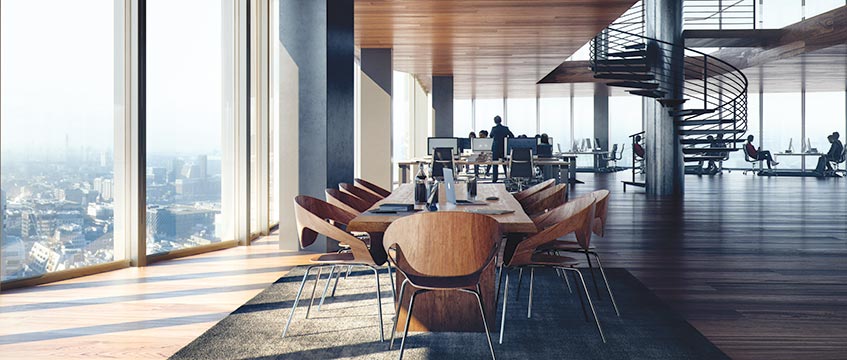All eyes were on 22 Bishopsgate, EC2, last summer. The troubled tower, once a symbol of the financial crash, was again under review by its backers, following the UK’s vote to leave the European Union. But after a will-they-won’t-they moment, the investment partners pushed the green button in October to start construction and the decision was hailed as a vote of confidence in the future of London post-Brexit.
“We had a responsibility to ourselves and to our partners to be a little bit cerebral about it,” says Harry Badham, UK head of development at AXA Investment Managers – Real Assets, the lead investor in a consortium that also includes British Colombia Investment Management Corporation, PSP and Temasek. “[We had a responsibility to] check what was going on and to make sure we weren’t going mad and the world wasn’t going to fall apart.
“But we came back to that same thing, which is that London is going to be a continuing centre of global business population, and that hasn’t changed for 1,000 years and it probably won’t change in the next 10 or 15 years.”
While London remains a global centre for business, the way business operates is changing. The City of London has rebranded itself as the “original co-working hub” in recognition of the need to attract a more diverse occupier base. As the leasing campaign for 22 Bishopsgate kicks off this month, with CBRE and JLL appointed advisers, how will the partners lure the next generation of occupiers to fill the 1.4m sq ft tower?
Sir Stuart Lipton, the veteran developer behind the project, maintains that the building is designed to “put people first”. Some 100,000 sq ftwill be devoted to wellness and the scheme was the first in London to adopt the new Delos WELL Building Standard.
Like a hotel
Music lessons, a library, spa, club, exercise rooms, food market, TED talks and coffee ordered from your desk will all be on offer to tenants. Lipton says to experience the building will be more akin to going into a hotel than a traditional office, with the reception area inspired by an art gallery.
“We will have your clothes cleaned at the laundry, we will have your towel replaced as though you were in a hotel,” he says. “You’ll go to the bike shop by bike to have it repaired; you’ll go to a spinning class on the bike; you’ll be able to go to a bike club.”
The highest level will feature a viewing gallery and an all‑night restaurant to match Heron Tower’s Duck & Waffle, EC2.
A token co-working provider is the new norm, often with shared spaces and a terrace available to all tenants. At 22 Bishopsgate, there will be no “co-working spaces” as such. Instead, there will be “project spaces”, which tenants can expand into for a period of time to cover a specific project.
“We will have all the amenities they [WeWork] have,” says Lipton. “But a lot of occupiers want 50 desks for three months or six months, and they don’t want all the bells and whistles, they just want the desks.”
The developers will appropriate some of the features that made co-working providers so successful, such as service, amenities and flexibility throughout the building. “They [tenants] don’t all need the WeWork style networking space,” Lipton says. “We will have our own curators, running this 100,000 sq ft. We will have the same quality. Because we’ve got such a big building we can have the very best.”
The skyscraper will also pioneer the open format of smart buildings, which means the building’s management system will be more flexible and the landlord can add new technology, such as facial recognition or other features requested by the tenant.
Interpret data
Badham says new building information technology is allowing the firm to interpret data and analyse areas such as productivity and security, rather than just collecting it. The building will have its own app, offering tenants services from food and drinks to cycle maintenance and laundry.
However, the team are keen to strike the right balance between smart and human. “There’s a schizophrenia between what’s making life quicker and easier and simpler, and what’s just smart for the sake of being smart,” Badham says. “It’s all well and good if you can book your meetings via an app. But sometimes it’s just quicker to say, ‘is that room free?’ So it’s finding that right balance.”
Are occupiers ready to pay for these kinds of services? “There’s a simple way of answering that – which is they already do,” Badham says, pointing to Google’s King’s Cross office at 6 Pancras Square, N1, which AXA IM – Assets successfully leased.
“You can see that people, the way they are using the office, the way they are interacting with the office, is totally different from some buildings where you go in and you see people po-faced waiting for the lift, po-faced in the lift, po-faced walking to their desk, vitamin D deprived. They are not getting the benefit of being at work.”
The partners won’t reveal the quoted rents for the building, but you would expect that they will try to beat the current City record of more than £100 per sq ft at the Leadenhall Building, EC3. Lipton sums it up: “Best product, best price. This is a building for people and if the tenants in this building are successful, then the rents will follow.”
22 in numbers
- 2019 – target completion date
- 1.4m sq ft floorspace
- £500m-£600m – estimated construction cost
- £300m – site acquisition
- 62 floors
- 50,000 sq ft – minimum letting size
- 23-sided form – the tower designed by PLP Architecture
- £1.5bn – more than £2bn – estimated gross development value











